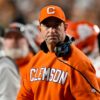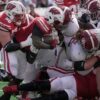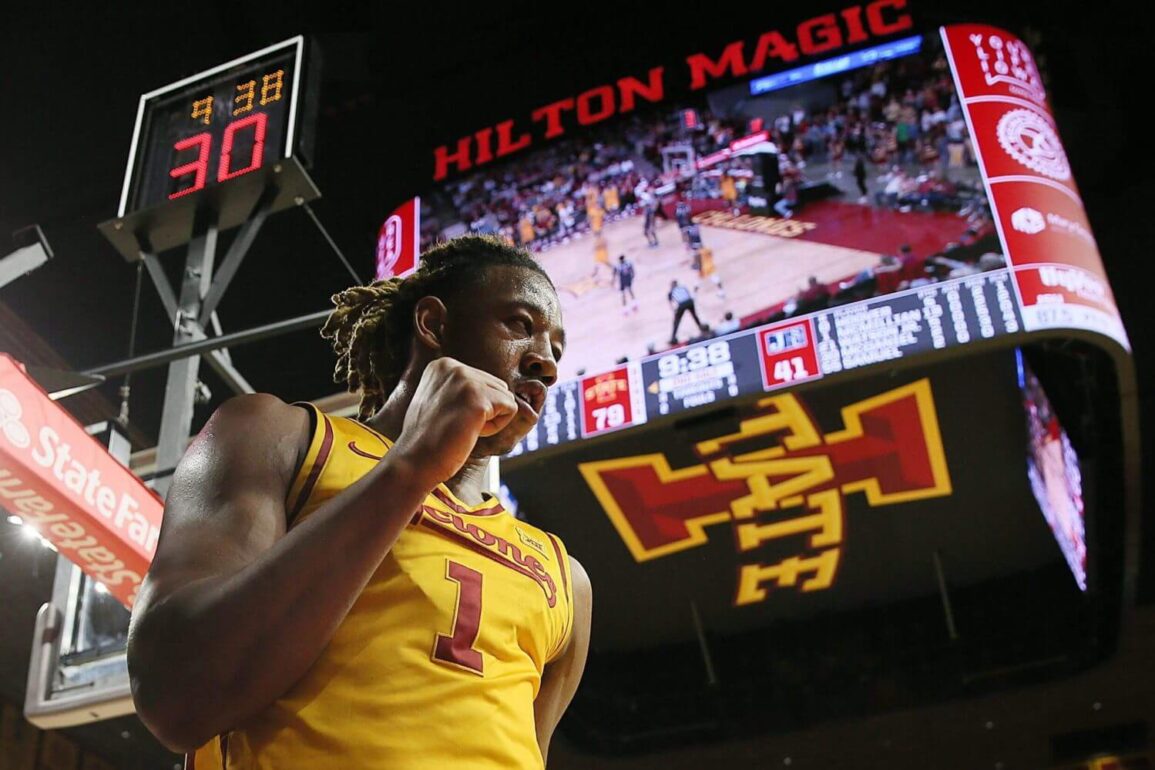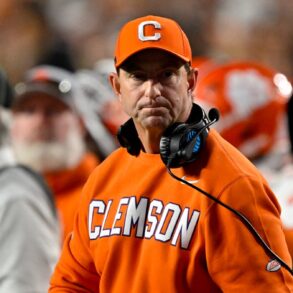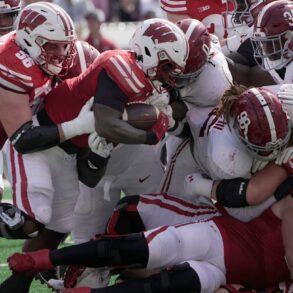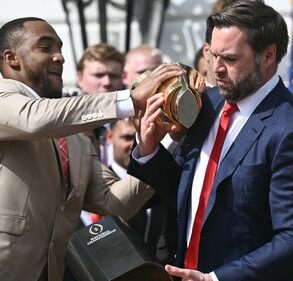AMES, Iowa — In a frame next to the door of Bill Fennelly’s office hangs a crusty old box score from his first game as Iowa State women’s basketball coach.
The date was Nov. 24, 1995. Iowa State beating Idaho State is irrelevant, but what stands out for Fennelly is the attendance: 310. His program had 31 season-ticket holders. The football program wasn’t much better; only twice that fall did the Cyclones draw more than 38,000 fans, with barely 27,000 showing up for the home finale.
Advertisement
Attendance was just one issue facing Iowa State athletics in 1995. Football hadn’t reached a bowl game since 1978, and it was trapped between a national power to its west in Nebraska and its instate rival to the east. Fennelly’s program hadn’t played Iowa in four years because the on-court disparity was too great. The athletic department was running annual deficits and was ordered by university leadership to reduce its budget by 14 percent. At the same time, a Title IX review forced the department to increase spending in women’s sports. With Texas and Texas A&M and their limitless resources headlining a merger between the Big Eight and four Southwest Conference schools, the Cyclones were in danger of falling even more behind financially and competitively.
“I remember going to football games and you’re like, ‘How are we going to survive this?’” Fennelly said this spring, sitting inside the immaculate Sukup Basketball Complex. “At some point you’ve got to pay the bills.”
Thirty years later, Iowa State has posted 85 consecutive home games of 50,000-plus fans dating back to 2011, and bowling in the south end zone at Jack Trice Stadium made it the Big 12’s second-largest football home. Its men’s basketball program ranked 17th nationally in attendance during the 2024-25 season, and its women’s basketball program ranked seventh. Iowa State’s athletics budget has more than quadrupled from $27 million in fiscal year 2005 to $114.1 million this year.
In what once was a sprawling parking lot between Jack Trice Stadium and Hilton Coliseum, a new $225 million public-private development called CyTown is scheduled to open in 2027 with shops, restaurants, a hotel and other businesses. That enterprise helped Ames lure the Iowa boys state basketball tournament away from Des Moines.
The football team won a school-record 11 games last fall and reached the Big 12 championship game. The men’s basketball team earned a No. 3 seed in this year’s NCAA tournament and has been to the Sweet 16 in two of the last four seasons. The women’s program qualified for the NCAA tournament for the 26th time under Fennelly and won a game.
Advertisement
The Iowa State athletic department’s financial and competitive forecast has never looked better. Forever a have-not, the Cyclones hired a change agent, organically built relationships throughout the state and worked diligently to field competitive programs in college sports’ ever-changing arms race. In the process, they took calculated risks and redefined what was possible both in central Iowa and for programs facing similar challenges.
“It’s funny because I tell my girls all the time, this is the golden era of Iowa State athletics, and you don’t even know it,” said Stephanie Copley, an Iowa State alum, chief of staff at agriculture co-op Landus and a volunteer with Iowa State’s We Will Collective.
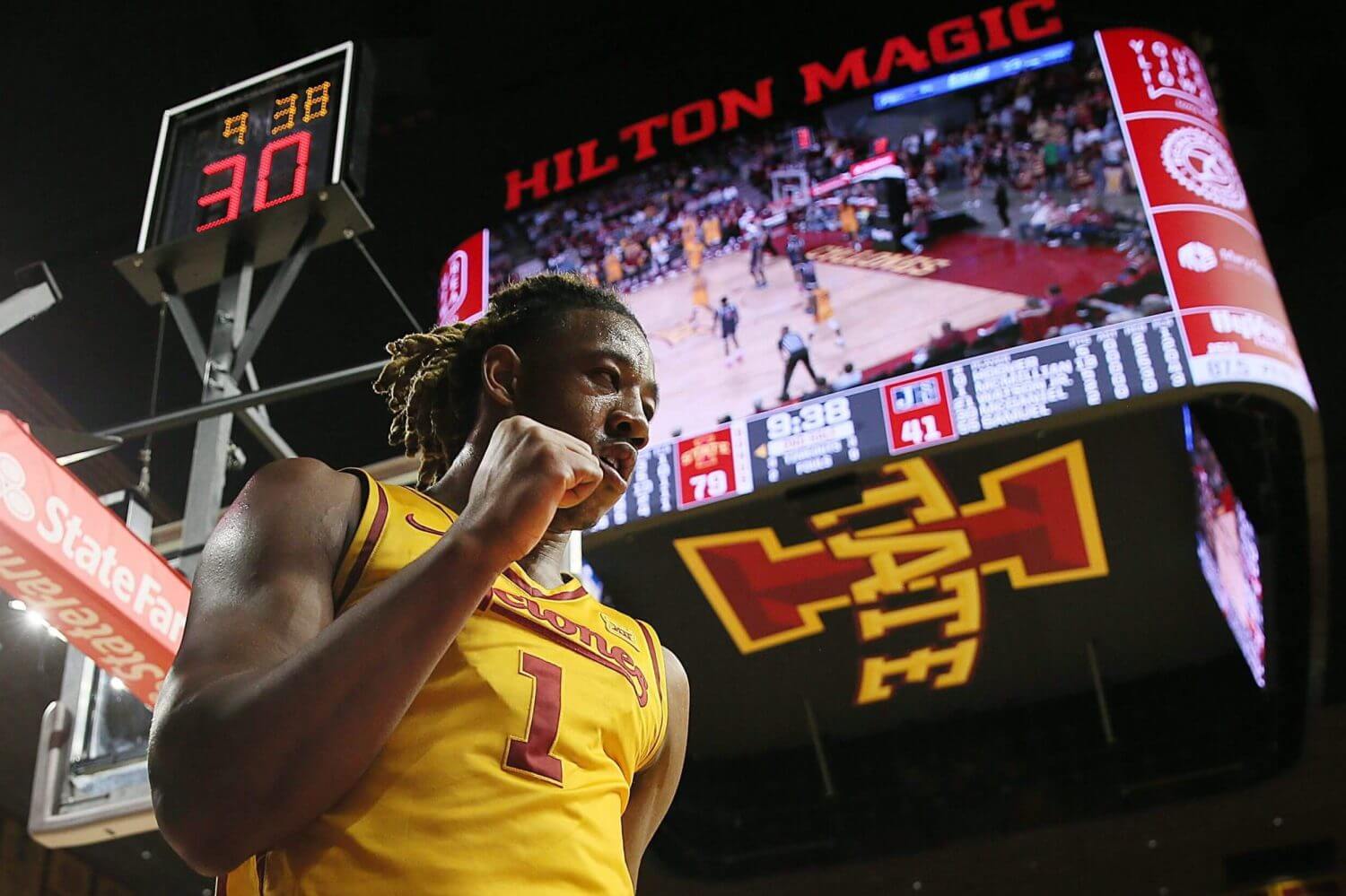
ISU men’s basketball spent the entire 2024-25 regular season in the AP top 15. (Nirmalendu Majumdar / Ames Tribune / USA Today Network via Imagn Images)
From the formation of league play through the early 1980s, Iowa was the only state with two schools competing in different major conferences. Iowa, the state’s liberal arts university, joined the Big Ten in 1899. Iowa State developed into a world-class agricultural and engineering institution but struggled to maintain athletic success inside the Big Eight or Big 12.
Iowa State’s facilities ranked among the worst in any league. Indoor sports like basketball and volleyball struggled to find practice space and times. A growing deficit prompted the department to drop baseball and men’s swimming in 2001. With the growing disparity between Iowa State and Big 12 financial giants Texas, Oklahoma and Nebraska, the Cyclones’ brass hired Wisconsin deputy athletic director Jamie Pollard in 2005.
That fall, Pollard cataloged what needed to change. In a word, everything.
“This place was underfunded, so under-resourced, understaffed and (lacked) facilities,” Pollard said from his office, which is located in the heavily windowed Jacobson Building perched outside of Jack Trice Stadium’s north end zone. “But I thought this place had good bones. Like the fans, they were loyal. They wanted to support; they just hadn’t been given something to capture their imagination.
Advertisement
“Those first couple years, we had more porta potties inside the stadium than we had outside the stadium.”
Money, of course, was critical to growth, but so was fan confidence. Pollard threw “logs on the fire.” He had a thermometer tracking football season-ticket sales installed on the Cyclones’ website. He put up a billboard in Cedar Rapids — the state’s second-largest city, located 100 miles east of Ames and 20 miles north of Iowa City — proclaiming “It’s a Cyclone State.” The gesture tweaked the instate rival, but it was designed to generate pride for the previously overlooked fans and engineering alums living in eastern Iowa. Pollard also required Iowa State fans to purchase season tickets to attend the Cy-Hawk football game. Within a year, the base grew by 50 percent to more than 30,000 season-ticket holders. The department relaxed football tailgate times and allowed RVs to stay on university property until Sunday.
But one move that initially rankled the base paid the most dividends. Every summer, Iowa State’s coaches traveled the state to participate in golf outings. To Pollard, it was an inefficient form of outreach, akin to preaching to the converted. It was time for something new.
“We described it as this: Let’s plant the seeds and fertilize it and water them and grow our own fans,” Pollard said. “In theory, Iowa State probably lost two generations of fans when they lost, what, 15 games in a row to Iowa (from 1983 to 1997)? During that time, it probably wasn’t really fun to be in the stadium. Students weren’t coming to the games. Then they graduate, and they’re not programmed to come to games. They go out into the workforce, they have children, they’re not coming to the games. We had to get those people back.”
Instead of golf, Pollard opted for a caravan approach, where Iowa State coaches and administrators spent two weeks on the road, stopping at more than a dozen communities. They scheduled family activities with mascot interactions, while the coaches signed every autograph and smiled in every picture. Attendance immediately soared at those events, and they grow each year.
In 2014, Matt Campbell brought Toledo to Jack Trice Stadium and lost 37-30. It was the Cyclones’ second and final win that season, yet the attendance was 52,281. That left an impression on the visiting football coach.
“I was just blown away by the commitment of the fan base,” Campbell said. “Just where did all these people come from?’ We were really good at Toledo, obviously. I understood we were a mid-major program playing at a really high level, and this place was not performing at a high level. Yet there was such a commitment from the fan base.”
Advertisement
In 2017, just Campbell’s second season in Ames, the Cyclones beat Oklahoma for just the second time since 1961 and earned a trip to the Liberty Bowl. More than 25,000 fans flocked to Memphis and famously drank several establishments along Beale Street out of beer.
“Some of the things that have been enjoyable from my perspective, is to give this fan base something to be, not just appreciative of, but something to be really proud of,” Campbell said. “One of the most powerful moments for me was when we went to Memphis in ’17 in the Liberty Bowl. We sold out that baseball stadium across the way for the pep rally on Friday. Between that and being down in Texas the next year in the Alamo Bowl and those events and just the excitement and the pride in our fan base, it was really special.”
In the past, Iowa State would earn a one-off bowl trip, then return to the Big 12 basement. That no longer was the case with Campbell, who rattled off three straight winning seasons going into 2020.
Perhaps the most important moment of Pollard’s Iowa State tenure took place two weeks after the COVID-19 pandemic canceled the NCAA Tournament. On a Sunday night in March of 2020, the athletic director texted every head coach: In my office, 7 o’clock, we’re having a meeting. Pollard, a trained CPA, had pored over the numbers of what the pandemic could cost his department, and Iowa State faced potential devastation.
The coaches gathered around Pollard’s office table the next morning, and for 90 minutes, Pollard explained how the people in that room — himself included — combined to make about 90 percent of the department’s salaries. If they agreed to cut their salaries by 10 percent and forgo their bonuses that year, they could prevent high numbers of department employees from losing their jobs.
“At some point in time,” Pollard told them, “COVID will end. And if we have to spend all our time trying to ramp back up because we let everybody go — the custodians, the equipment people, the marketing people — you all aren’t going to be successful. So, if you really want to be successful, you take the pay cut, you give up your bonuses, and we won’t lay anybody off. And I’m positive when we come out of COVID, we’ll be one of the leaders, because we’ll have a head start.
“They all agreed to it on the spot.”
Advertisement
Afterward, Pollard received a text from Campbell, who let the athletic director know if he needed to withhold more, he could. The athletic director choked up five years later recalling that moment: “Who does that?”
“It was critical for me to make sure that we kept our great people,” Campbell said. “It’s always been about that, the people that are working with us here. It did end up taking a lot more than whatever the 10 percent was, but I would rather take it than lose some of our good people that it was going to affect.”
Iowa State implemented those cuts the next day and didn’t lay off or furlough a single employee. The department used reserves to cover a $20 million shortfall, rather than borrowing from the institution or a bank. That level of fiscal responsibility was different from many other athletic departments. Across the state, for instance, Iowa athletics borrowed $50 million from the university, complete with a 15-year repayment plan.
“Some things changed after COVID,” Pollard said. “But all of our custodians stayed in place. All of our event and equipment people stayed in place, and we were ready to hit the ground running. I’m convinced that’s why we went to the Fiesta Bowl that year. And why did we bounce back from being 2-22 in (men’s) basketball so quickly? Yeah, (head coach T.J. Otzelberger) gets all of the credit, and he should get most of it, but everybody else stayed here.
“It allowed it to give us a fighting chance. I think we’ve taken advantage of it.”
In 2020, Iowa State reached the Big 12 title game for the first time. The Cyclones earned a bid to their first major bowl and beat Oregon 34-17 in the Fiesta Bowl to finish with a No. 9 ranking. Last fall, the Cyclones reached their second Big 12 title game, coming closer to their College Football Playoff debut than ever. The men’s basketball team was ranked as high as No. 2 last season and looks built to last under Otzelberger, who came aboard in 2021. And the athletics department has turned a profit each year.
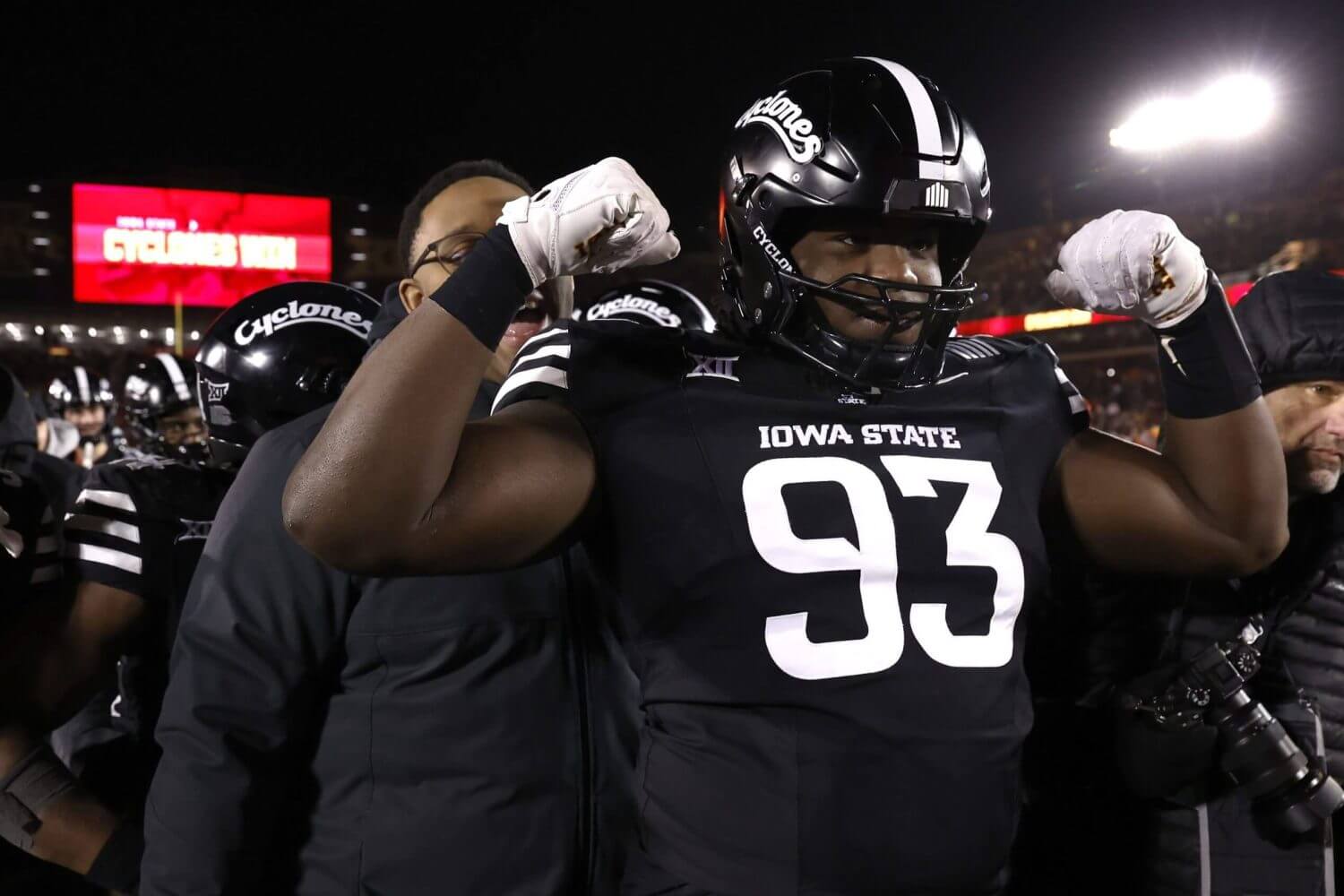
Cyclones football won 11 games in a season for the first time in 2024. (David Purdy/Getty Images)
Construction buzzes nonstop almost every day between the half-mile that separates Jack Trice Stadium from Hilton Coliseum. The area now known as CyTown once was filled with tailgaters on six or seven Saturdays per year but will soon become a 40-acre multi-use entertainment complex with year-round attractions.
Advertisement
Officials envision CyTown as a catalyst to propel Iowa State’s enrollment surge (it has soared by 18 percent since 2005), retain faculty and staff and attract national events to its outdoor concert venue.
“You want it to be a place in central Iowa that people want to live,” Fennelly said. “You’d better figure out something that will draw people, not just seven Saturdays a year. I think that’s been the forward-thinking part of our university.”
The Big 12 has survived multiple break-up attempts while losing financial juggernauts such as Texas, Oklahoma and Nebraska to other conferences, and the departures have left athletic departments vying to fill that competitive vacuum. But Iowa State not only has survived; it has thrived. Once considered perhaps the worst athletic department in any power conference, the Cyclones generated the most football ticket revenue among the Big 12’s public programs in fiscal year 2023.
When the House settlement becomes official, the Cyclones plan to fully fund the $20.5 million allowed in revenue sharing with athletes. That will prevent Iowa State from falling behind when recruiting against its instate rival and the six other Big Ten or SEC schools in bordering states. It also enables the Cyclones to not only keep pace with its Big 12 foes but compete for championships.
“Some people could characterize that there’s not necessarily a dominant top dog (in the Big 12) as a bad thing,” Copley said. “I think it’s a good thing, and I think it makes it so much more exciting. We have an opportunity to establish ourselves as that ‘big dog.’ I’m looking forward to that. I think it’s as good of an opportunity for us as we’ll probably ever have at Iowa State.”
“When Texas and Oklahoma left, somebody is going to take that spot,” Pollard said. “We’re as well-positioned as anybody to do that. I look at what’s happening in football and basketball and, yeah, we’ve got a chance to do that.”
(Top photo: David Purdy / Getty Images)
This post was originally published on this site be sure to check out more of their content.


